The Grand Bazaar in Istanbul, Turkey, has been a major trading hub since the 15th century. Covering over 30,000 square meters, it houses more than 4,000 shops offering jewellery, textiles, spices, and handcrafted items. The market draws millions of visitors each year, providing an opportunity to witness skilled artisans at work. Rich aromas, intricate carpets, and ornate ceramics fill its winding alleys, making it a significant cultural landmark. Exploring the market allows visitors to appreciate Turkey’s longstanding heritage of trade and craftsmanship.
Quick Details About Grand Bazaar
Location: Istanbul, Turkey
Scale and Structure: I Spanning 30,700 square meters, it includes over 60 streets and thousands of shops.
History: I Established in 1461 during the Ottoman period, the market has evolved into a major trading centre.
Major Attractions: Antique stores, Turkish carpets, ceramics, spices, and handcrafted goods.
Architectural Features: I The market showcases Ottoman-era design, with domed ceilings and intricate archways.
Opening Hours: 8:30 AM – 7 PM (Closed on Sundays)
Location
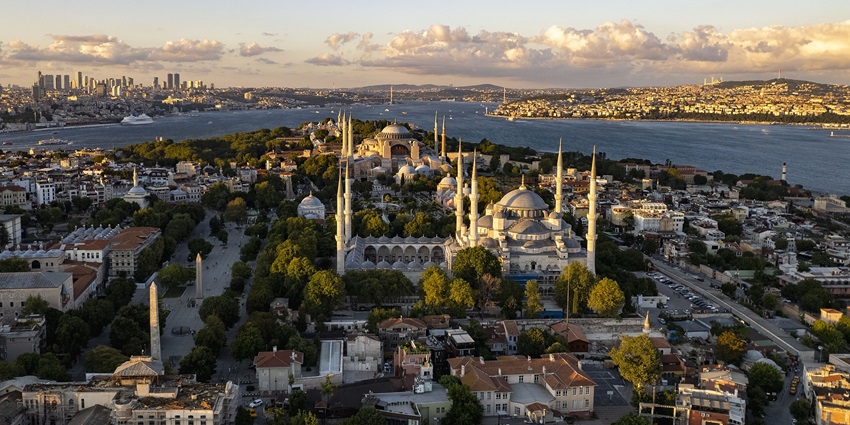
Photo: Hunanuk / Wikimedia Commons
Grand Bazaar, located in Istanbul’s Fatih district, lies between Beyazıt and Nuruosmaniye, making it easily reachable from major city landmarks. This historic marketplace continues to be a centre for commerce, attracting traders and shoppers. Its network of alleys leads visitors through sections dedicated to textiles, jewellery, spices, and handcrafted goods. The market’s location has long made it a meeting point for merchants from different cultures. Its proximity to Istanbul’s historical sites further enhances its significance as a commercial and cultural landmark.
How To Reach

Photo: Losth / Wikimedia Commons
By Bus: Local buses connect various districts of Istanbul to Beyazıt Square, the closest stop to the bazaar.
By Train: Visitors can take the tram to Beyazıt-Kapalıçarşı station, providing direct access to the market. Istanbul’s metro and tram system is well connected to the “Grand Bazaar Istanbul” area.
By Taxi: Taxis are readily available across Istanbul, offering a convenient way to reach the bazaar from any location.
By Air: Istanbul Airport and Sabiha Gökçen Airport serve international and domestic flights, with airport shuttles and taxis available for transfers
Places To Visit Near Grand Bazaar
While exploring the Grand Bazaar, consider visiting these nearby attractions.
1. Hagia Sophia

Photo: Adli Wahid / Wikimedia Commons
Hagia Sophia was originally constructed as a Byzantine cathedral in the 6th century, it later became an imperial mosque and now functions as a museum. Detailed mosaics, towering domes, and grand chandeliers adorn its interiors, showcasing architectural brilliance. The grand central nave, supported by marble columns, highlights the ingenuity of ancient builders. Visitors can explore its upper galleries for a closer look at religious frescoes and panoramic views of the central hall, offering a deeper connection to Istanbul’s past.
Major Attractions: Byzantine architecture, historical relics, large domes
Distance From The Bazaar: 1.2 km
2. Basilica Cistern
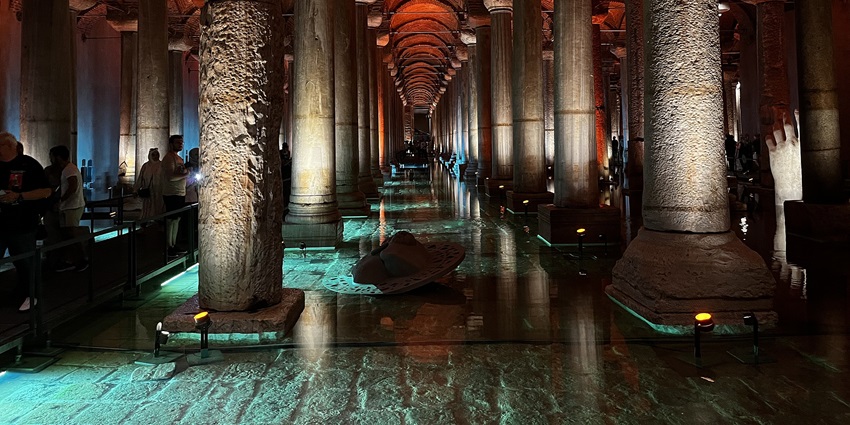
Photo: Kurmanbek / Wikimedia Commons
The Basilica Cistern once stored water for the city during the Byzantine era. Built in the 6th century, its vast structure includes hundreds of columns supporting the arched ceilings, creating an almost mystical atmosphere. The dim lighting and reflections on the water add to its historical charm. Notable features include the Medusa head columns, which are placed upside down, sparking curiosity about their origins. Visitors can walk along wooden pathways to witness the ancient engineering that helped sustain Istanbul for centuries.
Major Attractions: Underground chamber, Medusa head columns, historic reservoir
Distance From The Bazaar: 1.5 km
3. Istanbul Archaeology Museums
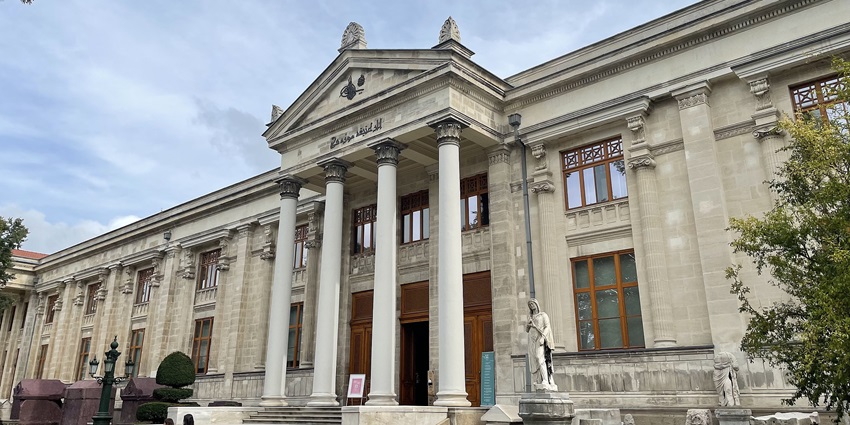
Photo: Metuboy / Wikimedia Commons
The Istanbul Archaeology Museum comprises three sections: the Archaeological Museum, displaying sculptures and relics from various empires; the Museum of the Ancient Orient, housing artefacts from Mesopotamia and Egypt; and the Tiled Kiosk Museum, featuring intricate ceramic works. Among the highlights are ancient sarcophagi, cuneiform inscriptions, and rare manuscripts. This museum provides an in-depth look into the artistic and cultural evolution of civilisations that once thrived in the region.
Major Attractions: Sarcophagi, ancient inscriptions, and historical artifacts
Distance From The Bazaar: 1.7 km
4. Galata Tower

Photo: Alexxx Malev / Wikimedia Commons
Galata Tower is a medieval stone structure that has played various roles throughout history, including a watchtower and a fire observatory. Standing at 67 meters, it provides an excellent vantage point to view Istanbul’s historic quarters. The cylindrical tower features narrow winding stairs leading to an observation deck, where visitors can admire the city’s skyline. Inside, exhibitions detail the tower’s transformation over the centuries. A café and restaurant on the upper floors allow guests to enjoy traditional Turkish dishes while overlooking the Bosphorus.
Major Attractions: Observation deck, historical exhibits, medieval architecture
Distance From The Bazaar: 3 km
5. Topkapi Palace
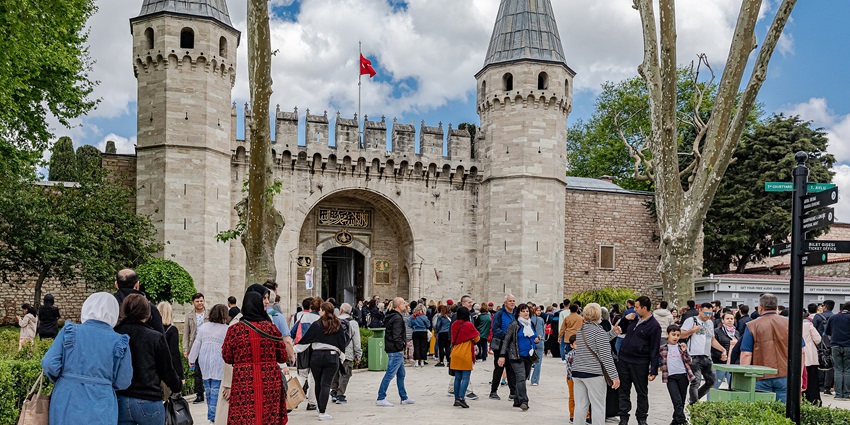
Photo: Ninara / Wikimedia Commons
Topkapi Palace served as the political and residential center of the Ottoman Empire for nearly 400 years. The complex includes lavish courtyards, ornate halls, and an extensive collection of imperial treasures. Visitors can explore the Harem section, which housed the sultan’s family, and the Treasury, which displays royal artifacts, including the famous Topkapi Dagger. The palace’s design reflects a blend of Islamic and classical architectural influences, making it a significant historical landmark.
Major Attractions: Treasury, Harem section, courtyards
Distance From The Bazaar: 2 km
Where To Stay

Photo: Max Vakhtbovycn / Pexels / Image For Representation Only
Accommodation options near the market cater to different budgets and preferences. Luxury hotels such as the Four Seasons Hotel Istanbul provide elegant rooms and exceptional service, while mid-range options such as Sirkeci Mansion offer comfortable stays with modern amenities. Budget-friendly guesthouses in Sultanahmet provide affordable lodging close to major attractions, ideal for travellers wanting to explore on foot. Many hotels in the area blend traditional decor with contemporary comforts, ensuring a pleasant stay for visitors exploring Istanbul’s historical sites.
Where To Eat

Photo: Shameel mukkath / Pexels / Image For Representation Only
Visitors can enjoy Turkish cuisine at restaurants near the bazaar, where traditional and modern flavours are available. Authentic eateries serve dishes such as kebabs, mezes, and sweet treats such as baklava. Hafiz Mustafa, known for its selection of Turkish desserts, offers a historical dining experience. Pandeli Restaurant, located within the Spice Bazaar, serves Ottoman-inspired meals in a heritage setting. Street food vendors nearby provide quick options such as simit and döner kebabs, making it easy to enjoy local delicacies while exploring.
Best Time To Visit
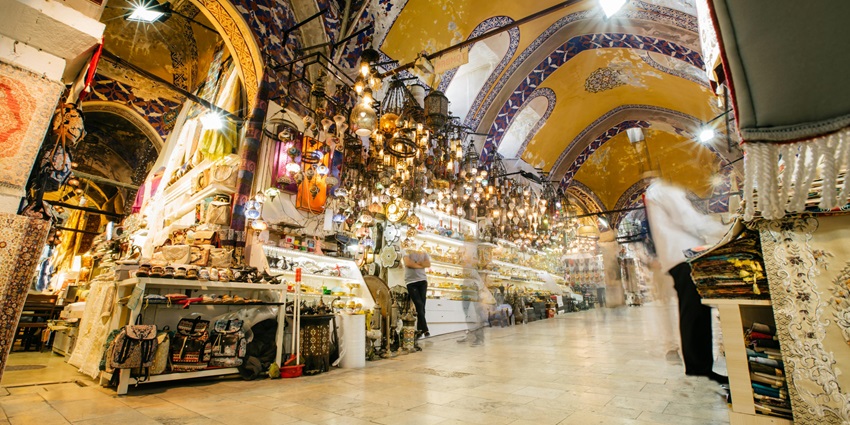
The most suitable time to visit the market is during spring (April to June) and autumn (September to November). These months provide mild temperatures, making it more comfortable to navigate the market’s narrow streets. Arriving early on weekdays allows visitors to explore the market with fewer crowds, offering a better shopping experience. During this period, vendors display a variety of seasonal goods, and outdoor seating at nearby cafes becomes more enjoyable for those wanting to take a break from browsing.
Other Factors To Consider

Photo: Thought Catalog / Unsplash / Image For Representation Only
Average Cost Of The Trip
A trip can vary in cost based on individual choices for shopping, lodging, and meals. Expenses generally fall between ₺4414 and ₺22070(₹10,000 and ₹50,000). Those seeking budget-friendly options can stay in affordable accommodations and enjoy local street food, keeping costs low. Visitors preferring upscale experiences may opt for luxury hotels and gourmet restaurants, increasing expenses. Shoppers widely practice bargaining at the bazaar, helping them secure better deals on handcrafted goods, textiles, and jewellery.
Tips For Travellers
- Bargaining is common in the “grand bazaar market,” so negotiate prices before purchasing.
- Many shops accept credit cards, but carrying cash is advisable for small purchases.
- The market is extensive; using a map helps in navigating different sections.
- Wear comfortable shoes, as exploring the market involves a lot of walking.
- Weekends tend to be more crowded; visiting early helps avoid peak hours.
The Grand Bazaar holds a significant place in Istanbul’s history, serving as a major trading hub for centuries. Its extensive network of shops offers a variety of traditional goods, from handcrafted textiles and ceramics to intricate jewellery and spices. Visitors can witness skilled artisans at work, adding to the market’s cultural charm. Plan a trip with TripXL for a seamless experience exploring this renowned marketplace.
Cover Photo: Tarık Kaşlı / Pexels


 WhatsApp
WhatsApp
 Twitter
Twitter









